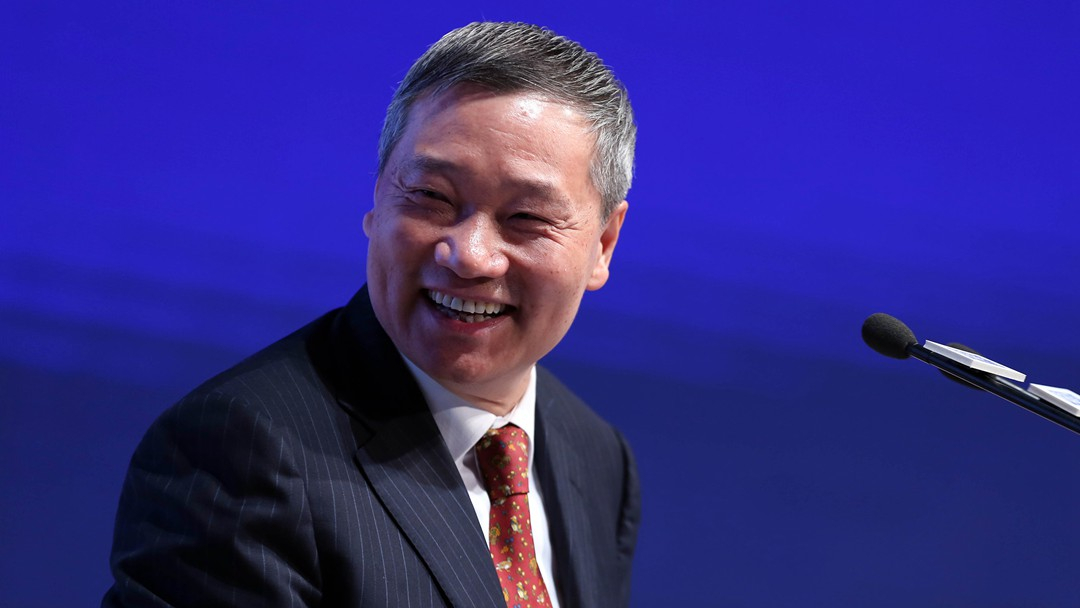
Economy
21:41, 25-Jan-2019
New financing system for B&R construction is in urgent need: expert
CGTN

It is urgent to build a new investment and financing system for the Belt and Road construction, Xiao Gang, former chairman of China's securities regulator said Wednesday local time in Washington.
Xiao gave a keynote speech on investment and financing mechanism for the Belt and Road Initiative at the 4th CF40-PIIE China Economic Forum, which was co-held by China Finance 40 Forum (CF40) and Peterson Institute for International Economics (PIIE).
"The Belt and Road construction is highly dependent on Chinese funds. This is closely related to the characteristics that state-owned enterprises with policy finance took a lead in the early stage. But this model is not sustainable,” Xiao said.
Xiao gave six specific policy recommendations, including adjusting domestic credit rules, improving investment protection and dispute resolution, strengthening risks assessment and early warning, setting up debt default assistance, enhancing anti-corruption and anti-commercial bribery, and achieving open and transparent information.
Caroline Freund, director of the World Bank Group's Belt and Road project also warned of possible financial risks. Caroline suggested that debt financing is expected to help achieve high growth in economies along the Belt and Road. However, they need even higher growth rate to stabilize the debt ratio.
She believed the transparency of project items should be improved and a cooperation framework for debt restructuring should be established to resolve the possible financial risks.
2018 Jingshan Report
At the forum, Huang Yiping, Chairman of CF40 Academic Committee and Deputy Dean of National School of Development at Peking University on behalf of CF40 also released the English version of the 2018 Jingshan Report on China's financial system.

VCG Photo
VCG Photo
Huang believed China should boost direct financing, strengthen market mechanism, and improve financial supervision in the future financial reforms.
He said it should develop a multi-level capital market, achieve market-based pricing of funds and keep the bottom line of preventing systemic financial risks to strengthen market mechanism.
The report pointed out three major problems with China's financial system. First, the system that has successfully supported China's factor-driven economic growth in the past cannot effectively support the country's innovation-driven economic growth today.
Second, the boundary between the government and the market is blurred. The market mechanism cannot effectively carry out functions such as risk pricing and rational allocation of funds.
Third, supervision of financial risks is inefficient. The issue of regulatory gaps and overlapped supervision is very prominent. There is also a lack of effective coordination between some regulatory policies.
The report also proposed seven policy recommendations on how to establish a modern financial system that operates on market principles and effectively adapts to changes.
The market should play a decisive role in allocating financial resources. Market entry and exit rules should be established for financial institutions. Distortions in fund pricing and investor behavior should be reduced and eventually eliminated.
China should further promote the market-based reform of commercial banks, improve corporate governance structure and capabilities of asset pricing, push forward marketization of interest rates, and establish deposit insurance systems and bank resolution mechanisms.
The functioning of capital markets should be optimized by enforcing fiduciary duties of market players.
The country should formulate financial policies that can effectively support innovation and industrial upgrading, experiment with sandbox regulation, and achieve a balance between innovation and risk control.
Financial regulation should resolutely safeguard the bottom line of forestalling systemic financial risks.
The monetary policy framework should shift from a quantity-based mode to a price-based mode.
The country should also perfect the legal system for a modern financial system, and establish a unified legal system and amend outdated laws.

SITEMAP
Copyright © 2018 CGTN. Beijing ICP prepared NO.16065310-3
Copyright © 2018 CGTN. Beijing ICP prepared NO.16065310-3